The origins of the city of Agra can be traced back to the days of the Mahabharata, the epic poem of Great India when it was called Agrevana, meaning ‘the edge of the forest’. Agra served as a capital for the Mughal Empire during the 16th and 17th centuries and flourished as a centre of art, drawing inspiration from Persian, Islamic, Turkish, Byzantine and Indian styles.
Agra’s greatest charm is the Taj Mahal – a magnificent marble mausoleum that epitomises love. Taj Mahal commands the horizon from most parts of the city and its rich history and romance have earned a place on the list of the Seven Wonders of the World. Yet Agra has so many more monuments that tell a rich narrative of the tides and times of Man – here’s how you can take in the city in 48 hours.
Set off from Delhi by train (there are two convenient, fast trains every morning, the Shatabdi and the Gatimaan) or by private cab with a train/picnic breakfast en route. Upon arrival in Agra, a quick hotel check-in and freshen up later, you’ll be ready to explore the city.
Start your Agra trail with a lesser-known monument, John Hessing’s tomb or the Red Taj. The Red Taj in Agra is a smaller, red sandstone replica sans inlay and mosaic work which serves as a tomb for a Dutch soldier and trader John William Hessing. It was built by his wife, Ann Hessing, and was inspired by the Taj Mahal, and is a symbol of love commissioned by a woman in memory of her husband. In 1792, the 13-year-old Hessing landed in Ceylon, later joined the Dutch East India Company’s army, fought many battles in India, and eventually died as a part of the Maratha forces defending the Agra Fort against the British. At its entrance, are two Persian inscriptions— an epitaph and a chronogram: the former expresses Ann Hessing’s grief and the latter marks the year of his death.
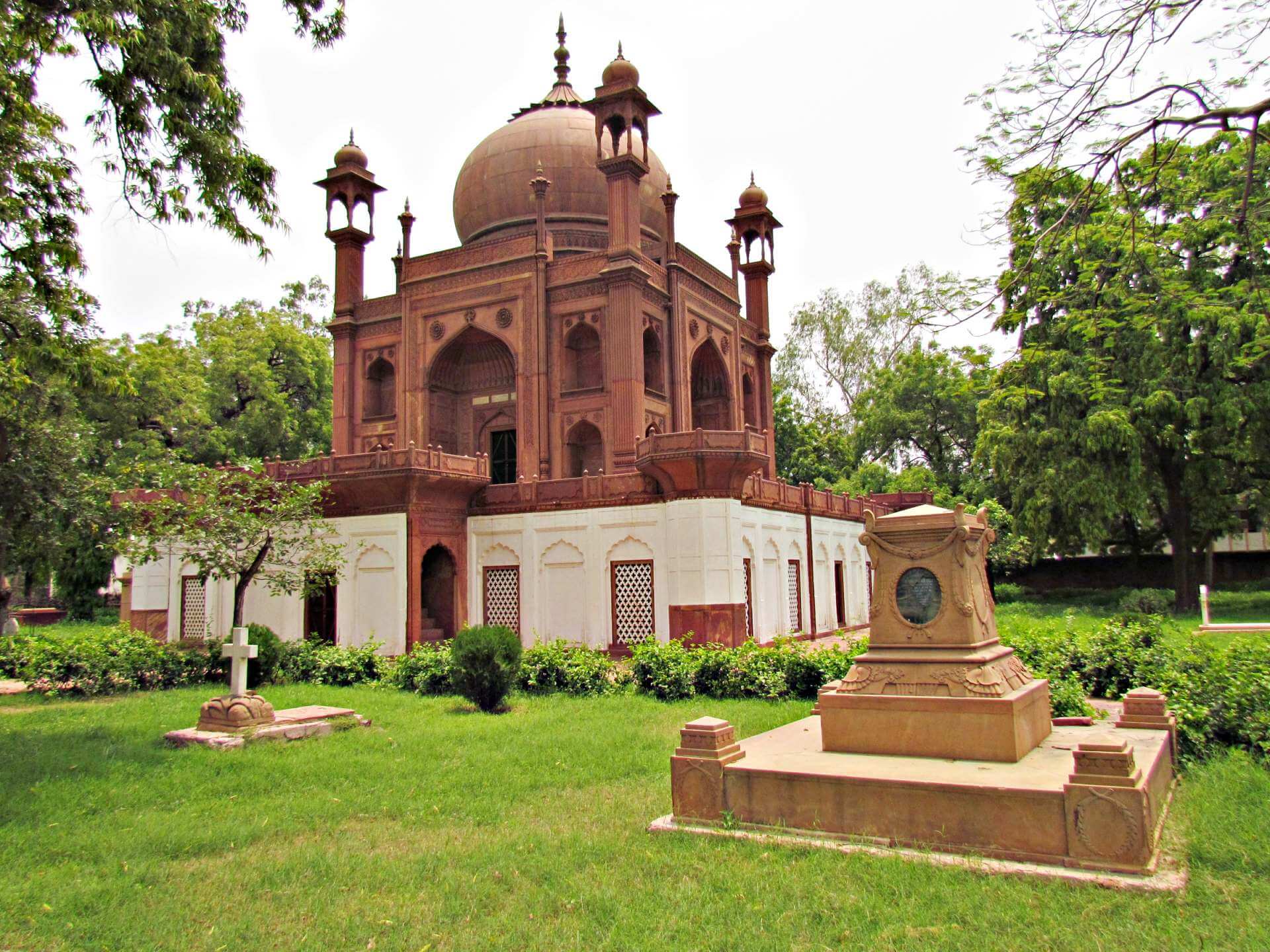
Continue to the Itmad-Ud-Daulah, a marble tomb built for the grandfather of Mumtaz (the queen interred at the Taj Mahal) also known as Baby Taj. This name should in no way imply a diminutive in either skill or splendour, as the Itmad-Ud-Daulah, may well have inspired the inlay artistry on the Taj Mahal and is a beautiful monument in itself. With a more traditional structure, the mausoleum was built to honour Itmad-Ud-Daulah, the once-itinerant traveller who set foot towards the East in the hope of making his fortune, and later, was the grandfather of some of the most powerful women in the Mughal Empire.
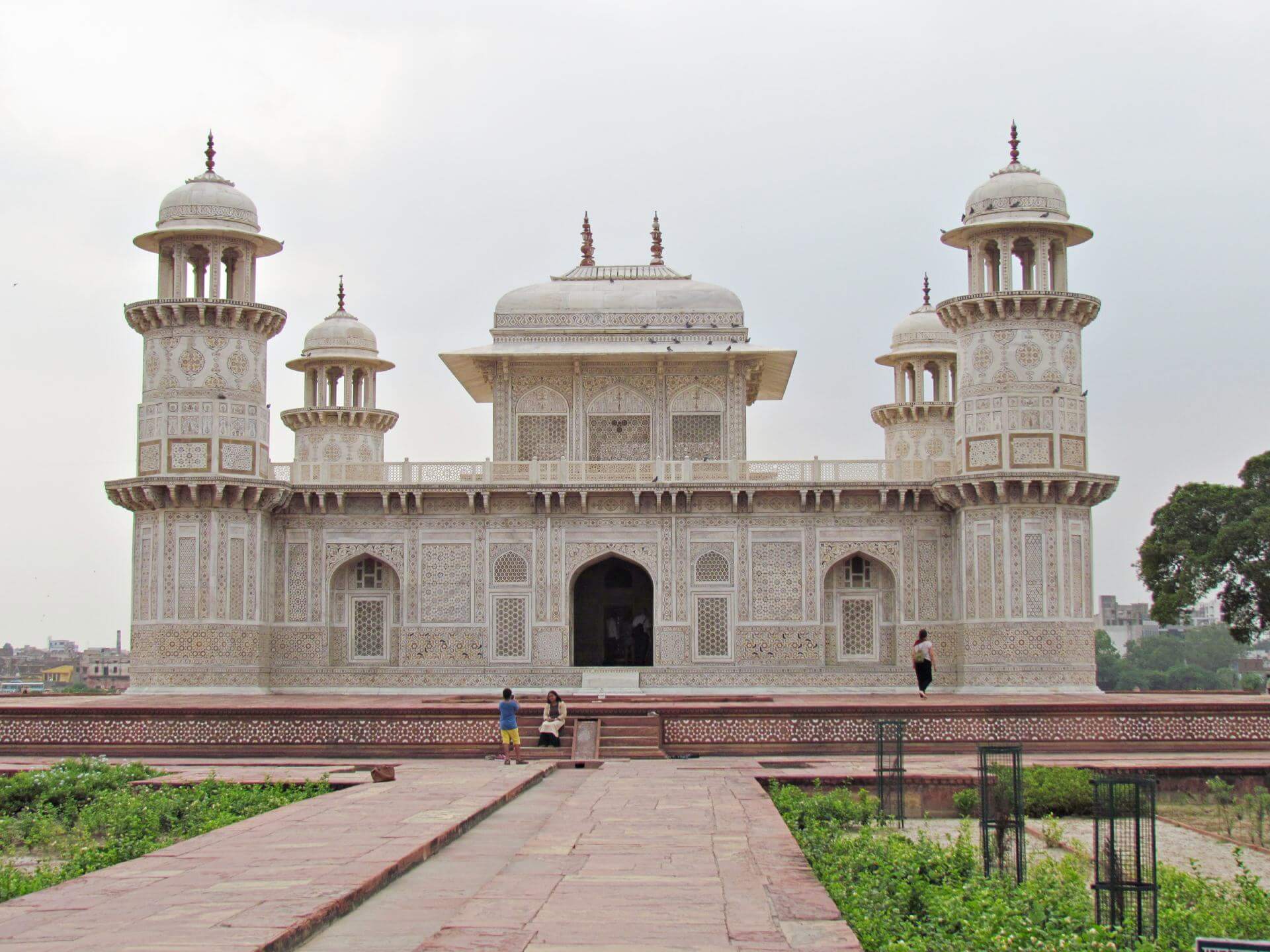
Enjoy a late lunch at any restaurant of your choice, sampling some of the palatial pleasures of the Mughal Empire – from rich meat gravies to aromatic, spiced biryanis.
After a light siesta, follow the Mughal trail to the imposing Agra Fort. Located on the right bank of the Yamuna river, the Agra Fort is one of the most important and robustly built strongholds of the Mughals, embellished with a number of richly decorated buildings. Let our storyteller guide narrate the rich, evocative history of the fort, where emperors like Babar, Humayun, Akbar, among other historic characters held sway. Moreover, through one part of the fort, you can also view the Taj Mahal through window bars and grilles, the emperor Shah Jahan who was imprisoned here by his son during his dying years.
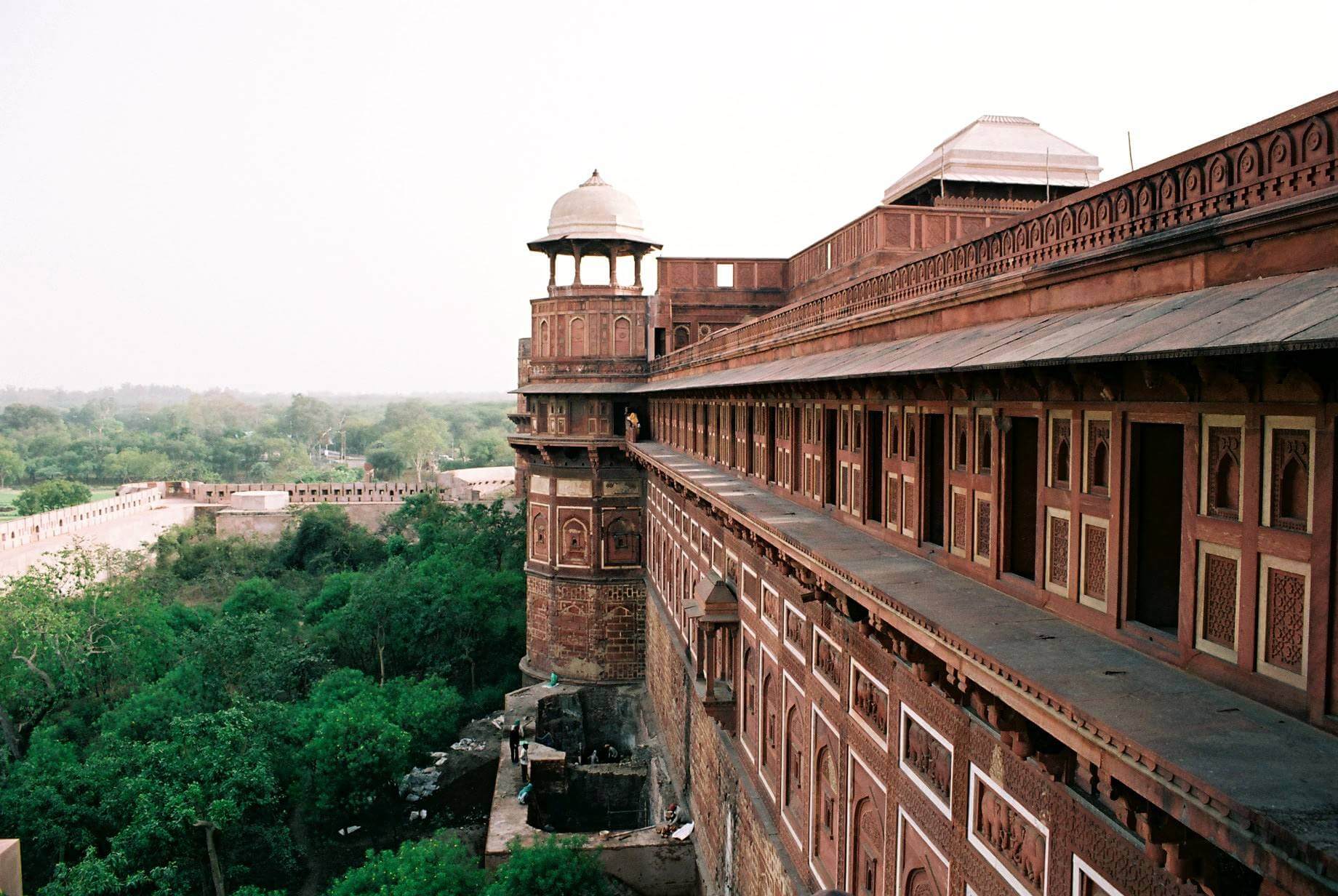
Later in the evening, head to the Mehtab Bagh gardens offer sweeping, sunset views of the Taj Mahal, reflected in the Yamuna river. The Mehtab Bagh is a four garden layout, typical of Mughal constructions worldwide – with beautiful flowering plants, pools and fountains. While legend claims this was to be the site of a Black Taj that the emperor Shah Jahan wished to build for himself, facing the monument he’d built for his love – no archaeological remains or historical records give credence to the theory. Amusingly during a recent trip, I also heard a security guard claim that had the Black Taj construction been successful, there would have been a bridge across the river – and I could almost imagine, the ghosts of the lovers, Shahjahan crossing over to meet each other, every night!
Spend the evening at leisure, before turning in.
Early the next morning, set off for the Taj Mahal, the marble mausoleum, which the emperor Shahjahan built for his queen, Mumtaz – universally recognized as a symbol of love and devotion. Beyond the intricate inlay artistry, Taj Mahal’s minarets, floors and calligraphy-embellished doorways create intriguing illusions in stone. Listen to the tales of Agra and the mausoleum, as also the romance between Shahjahan and Mumtaz or simply reflect upon the glory of the monument.
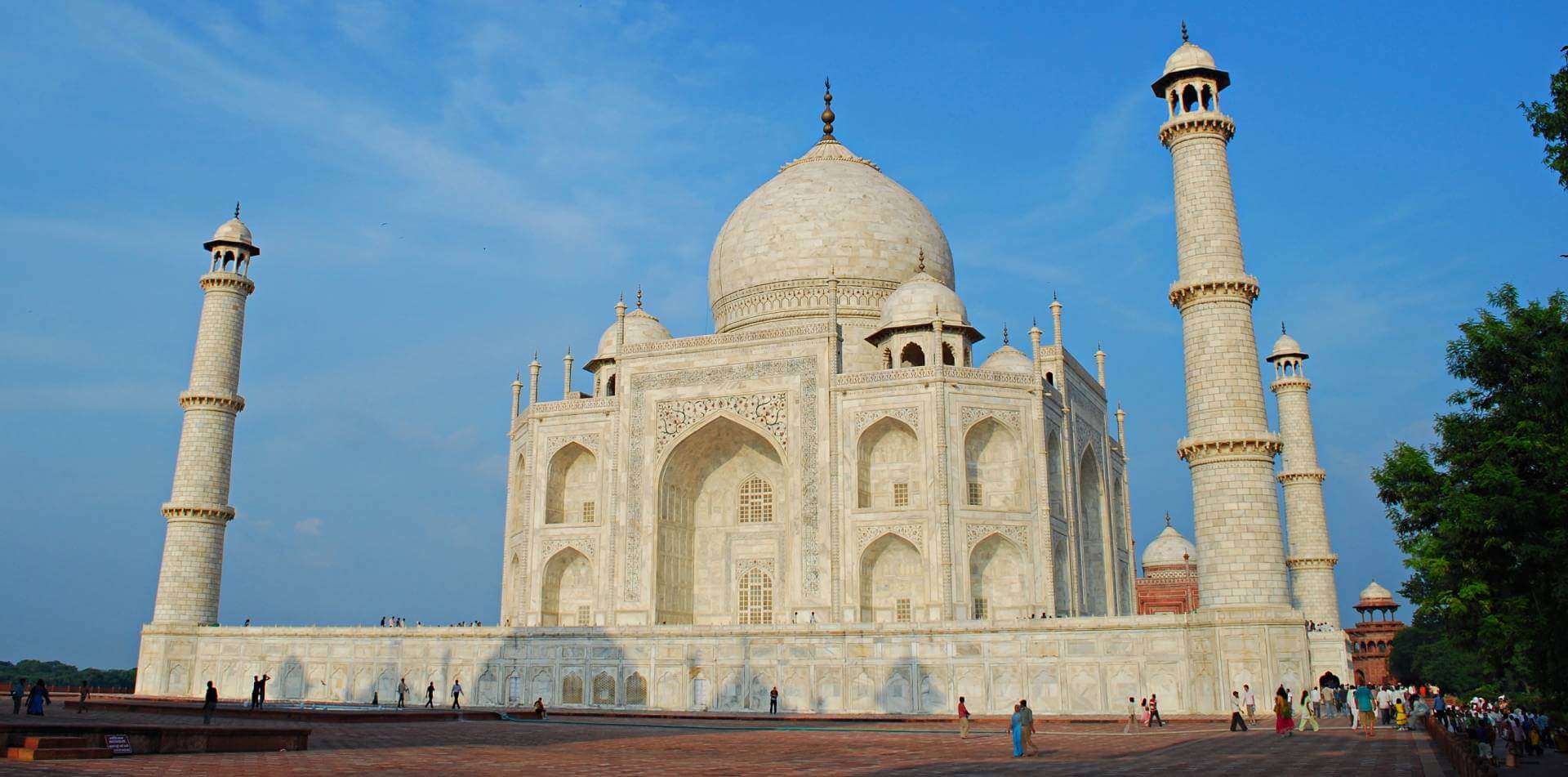
After a shutter-happy morning, tuck into a hearty breakfast before making your way towards Fatehpur Sikri. Fatehpur Sikri was a city capital built by Emperor Akbar to honour a Sufi saint, Salim Chisti, which is perhaps the best-preserved vestige of the Mughal Empire. The city complex includes palaces, pools, public audience halls, mosques and other places of worship, and (you guessed it) tombs! Experience the quiet of the queens’ palaces, each with their individual styles and dimensions. With Salim Chisti’s significance to the Muslims across the world, the tomb is abuzz with prayers, rituals and offerings – and offers an interesting insight into the age-old cultural traditions that are still practised.

From Fatehpur Sikri, one head back to Agra or can drive on to Jaipur. For those heading back to Agra, you can relax in the afternoon. For those who love arts and crafts, try our inlay workshop to learn the intricate laying of semi-precious stones into the marble floors to create floral motifs. Learn how the craftsmanship has continued through the ages, its delicate artistry and craft an inimical souvenir to take home!
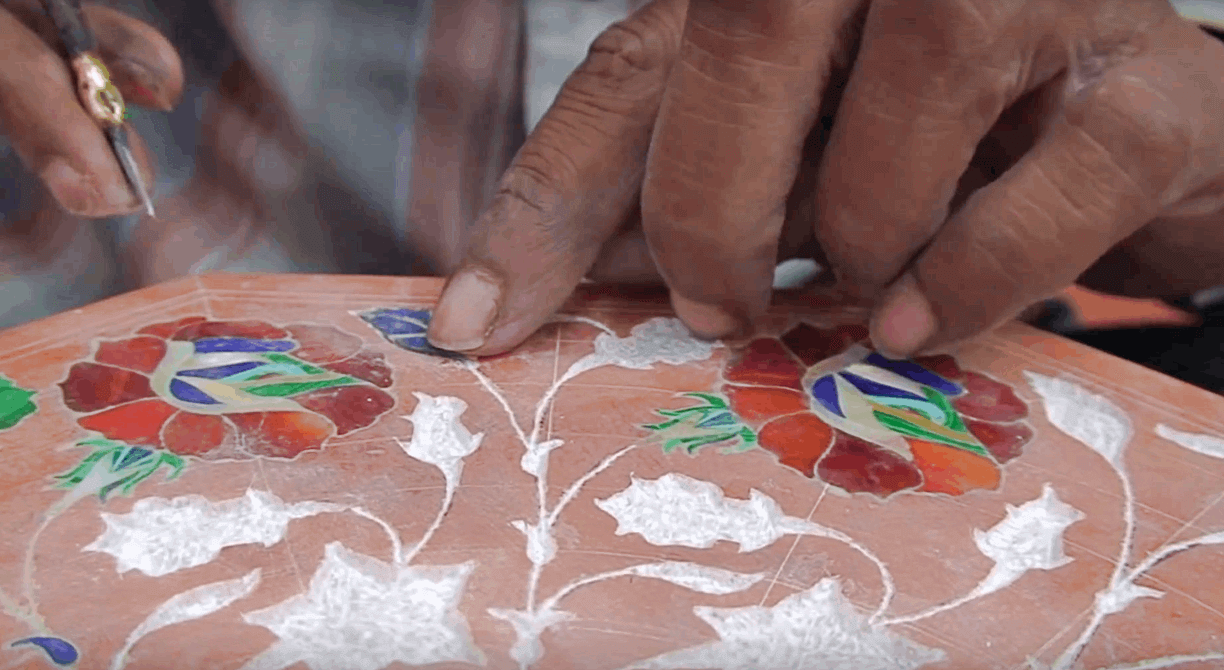
Or set off on an Agra Old City Walk, past the Agra Fort Railway station with its distinctly European architecture, and the Jama Masjid district surrounded by the city’s old bazaars and fine architecture. Through these bylanes, you can hone your bargaining skills on everything from zardozi embroidery to inlaid marble objects.
For those driving on to Jaipur, stay tuned for our feature on the ‘Pink City’s’ short-haul delights.
